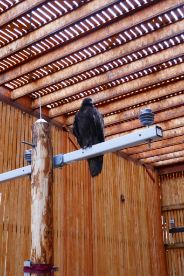Research
Research is an important part of our mission at the Rocky Mountain Raptor Program. We feel it is important to learn as much as we can about the raptors we care for and the diseases and hazards that affect them, in the hopes to find solutions to these problems. The large number of raptors that come through our doors for rehabilitation each year provides a wonderful basis for collection of data for a variety of research projects.
Raptors are an important part of our natural environment. In addition to their awe-inspiring beauty, birds of prey are at the top of the food chain and are key indicators of the health of their surrounding ecosystem. The presence of toxic substances and contagious diseases can be quickly discovered by studying the birds we rehabilitate. For example, West Nile Virus appeared in local bird populations in 2003. We shared this information with the Larimer County Health Department and the CDC so they could take action and get ahead of a potential outbreak. Please donate today to help us to continue this valuable effort.
Current projects for sample or data collection (primary investigator in parentheses):
- Prevalence of toxoplasma in raptors (APHIS)
- Enhanced surveillance of WNV and AI (Komar, CDC)
- Population structure and genetic diversity in American kestrels (Wommack)
- Measurement data supporting the ongoing study of the taxonomic status of the Harlan’s red tailed hawk (Allen, Clarke)
- Data collection for raptor electrocutions and flare burner injuries (Harness)
- Survey of lead levels in raptors of Colorado (RMRP)
All carcasses are sent to Denver Museum of Nature and Science for their tissue bank. Past projects have included sample or data collection for:
- Study of vitamin levels in raptors (Wimsatt, CSU)
Full list of publications can be found here.

